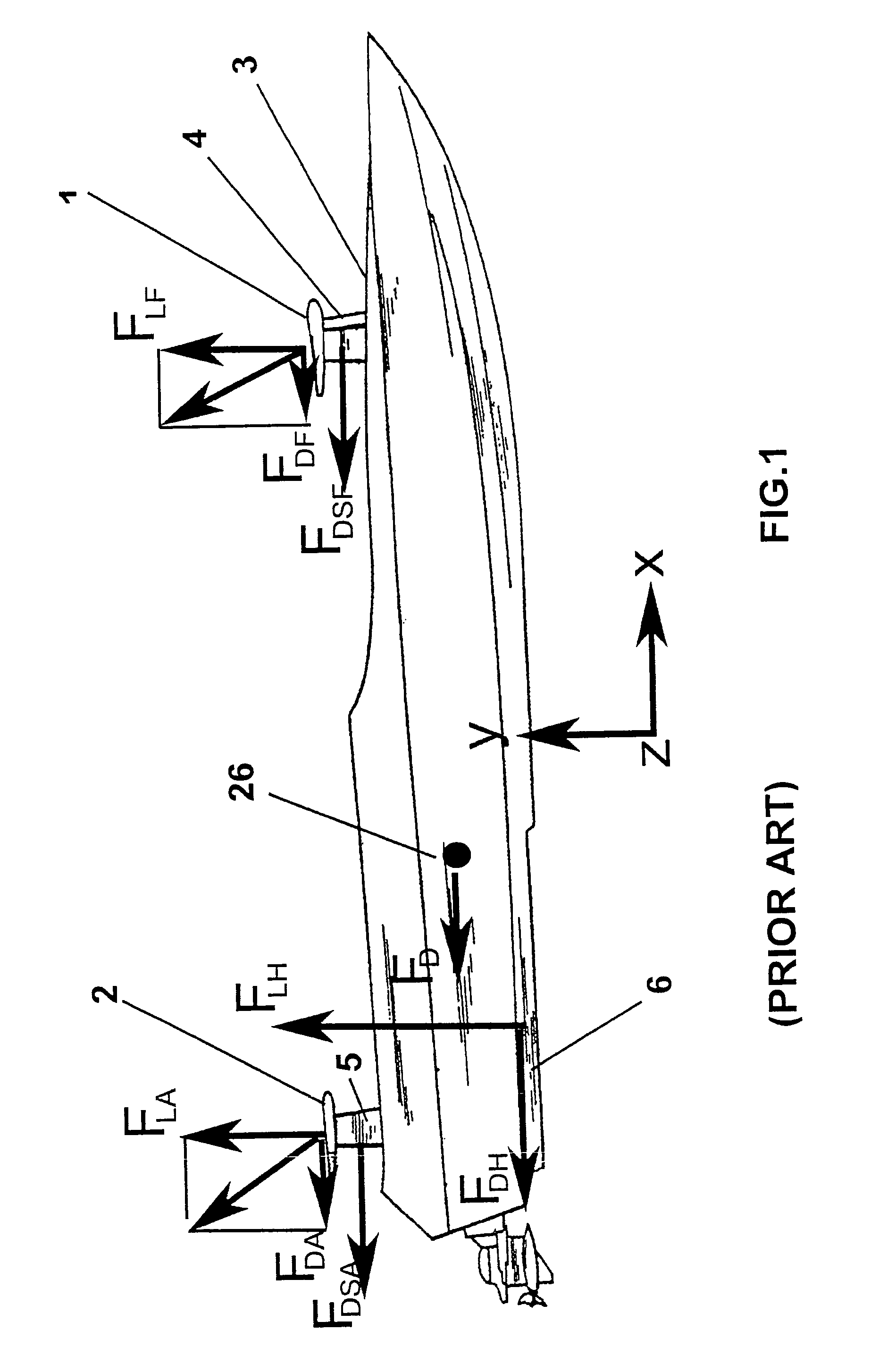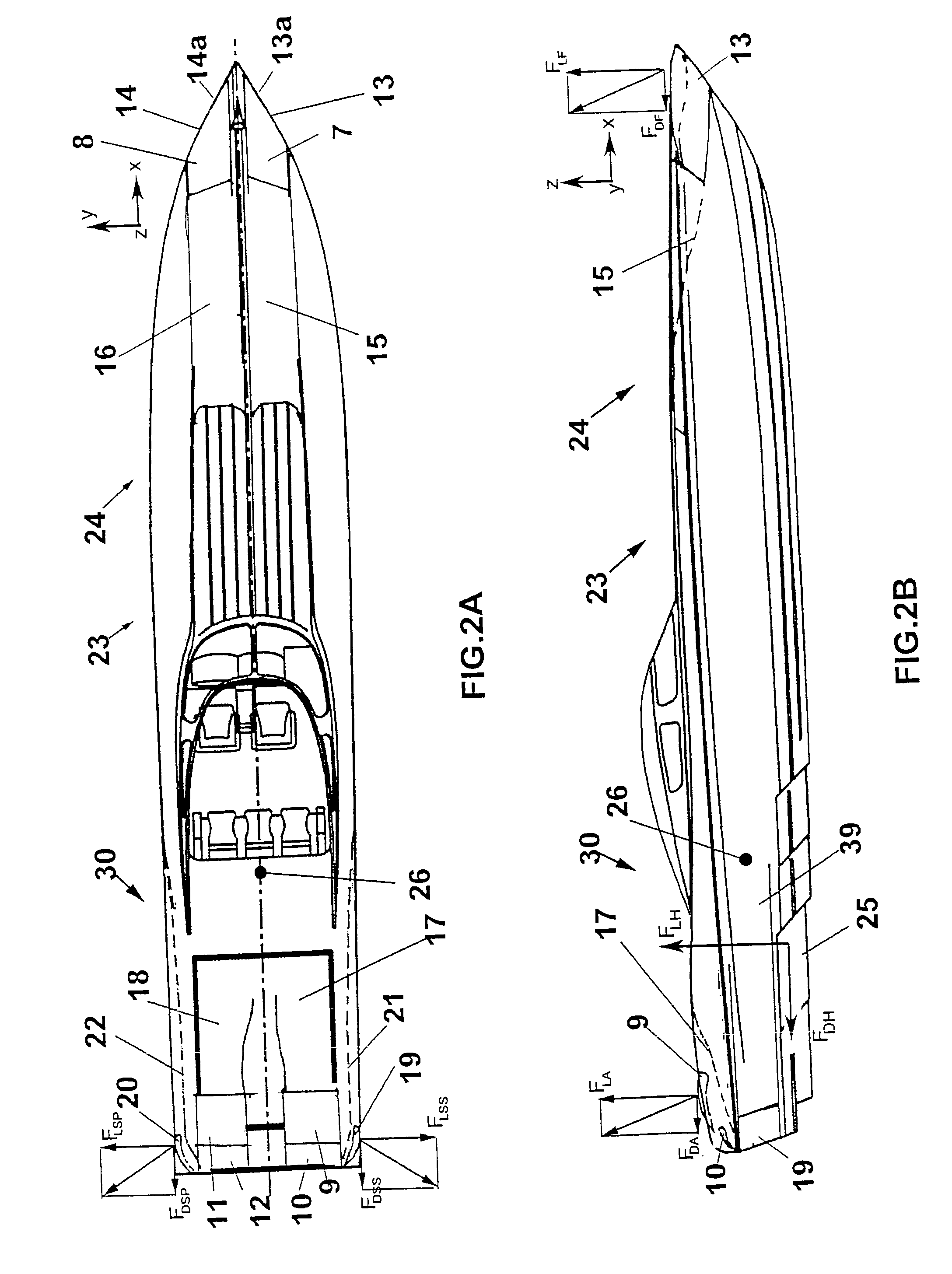Methods and apparatus for aerodynamic and hydrodynamic drag reduction and attitude control for high speed boats
a technology of hydrodynamic drag reduction and attitude control, which is applied in the field of high-speed boats, can solve the problems of unavoidably aerodynamic drag induced, adverse pressure gradients the (viscid) airflow imposes on the (viscous) boundary layer will be too great for the flow to remain attached, and the hydrodynamic pressure drag is reduced, so as to reduce the hydrodynamic wetted area, reduce the hydrodynamic drag, and reduce the effect of aerodynamic and aerodynamic drag
- Summary
- Abstract
- Description
- Claims
- Application Information
AI Technical Summary
Benefits of technology
Problems solved by technology
Method used
Image
Examples
example i
[0106]To demonstrate the advantages of various example embodiments of the present invention, a wing system was designed for a 47 foot, 9800 lbs powerboat, similar to the example embodiment of the power boat 23 shown in FIG. 2. For the bow, a transonic wing profile was selected with an area of 0.6 m2 for both the starboard wing 7 and the port wing 8, each wing having a 6° angle of attack. For the transom a staggered stack of two wings was selected with areas of 0.26 m2 and 0.1 m2, respectively, for the stack of starboard wings 9, 10 and for the stack of port wings 11, 12, each set of wings having angles of attack at 14° and 36°, respectively. The estimated lift generated as a function of boat velocity is shown by curve 101 in FIG. 11 for the bow wings 7, 8 and by curve 102 in FIG. 12 for the transom wings 9, 10, 11, 12. In this particular example, the bow wings have an airfoil profile DLRF-R4 and the transom stacks of wings have an airfoil profile FX76MP14. The particular selection s...
example ii
[0107]To illustrate the effectiveness of the example embodiment of the present invention utilizing a single leading-edge wing at the leading edge of a tunnel hull of a catamaran, an example wing system in accordance with the present invention was designed for a 40 foot, 8500 lbs catamaran. The particular catamaran used for this example, in its prior-art form, has a tunnel width of 66 inches, a tunnel height at the front of 66 inches and a tunnel height at the back of 44 inches. The benefits of example embodiments of the present invention are illustrated by the effect of a leading-edge wing to decrease the ability of the tunnel-generated forces to lift the hull off the water in addition to decrease the ability of the tunnel-generated forces to rotate the bow up and around the center of inertia (“blow over” event).
[0108]FIG. 14 shows, as a function of catamaran attitude (the angle of the longitudinal axis of inertia of the boat with respect to the water) at 160 mph, the lift generated...
PUM
 Login to View More
Login to View More Abstract
Description
Claims
Application Information
 Login to View More
Login to View More - R&D
- Intellectual Property
- Life Sciences
- Materials
- Tech Scout
- Unparalleled Data Quality
- Higher Quality Content
- 60% Fewer Hallucinations
Browse by: Latest US Patents, China's latest patents, Technical Efficacy Thesaurus, Application Domain, Technology Topic, Popular Technical Reports.
© 2025 PatSnap. All rights reserved.Legal|Privacy policy|Modern Slavery Act Transparency Statement|Sitemap|About US| Contact US: help@patsnap.com



